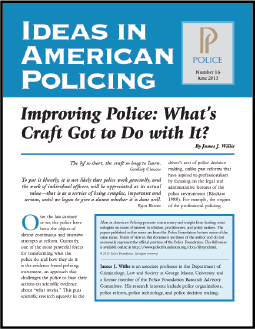
Over the last century or so, the police have been the object of almost continuous and intensive attempts at reform. Currently, one of the most powerful forces for transforming what the police do and how they do it is the evidence-based policing movement, an approach that challenges the police to base their actions on scientific evidence about “what works.” This puts scientific research squarely in the driver’s seat of police decision making, unlike past reforms that have aspired to professionalism by focusing on the legal and administrative features of the police environment (Klockars 1988). For example, the origins of the professional policing model that dominated much of the twentieth century lay in the implementation of laws, organizational policies, and departmental rules. As features of bureaucratic organization, their purpose was to strengthen accountability and to influence the choices made by patrol officers and the organizations that employed them (Reiss 1992). Community policing, the most popular reform of the last few decades, then sought to reverse this trend by assigning a greater role to the needs and concerns of local communities for guiding police actions (Mastrofski and Greene 1993, 80).
